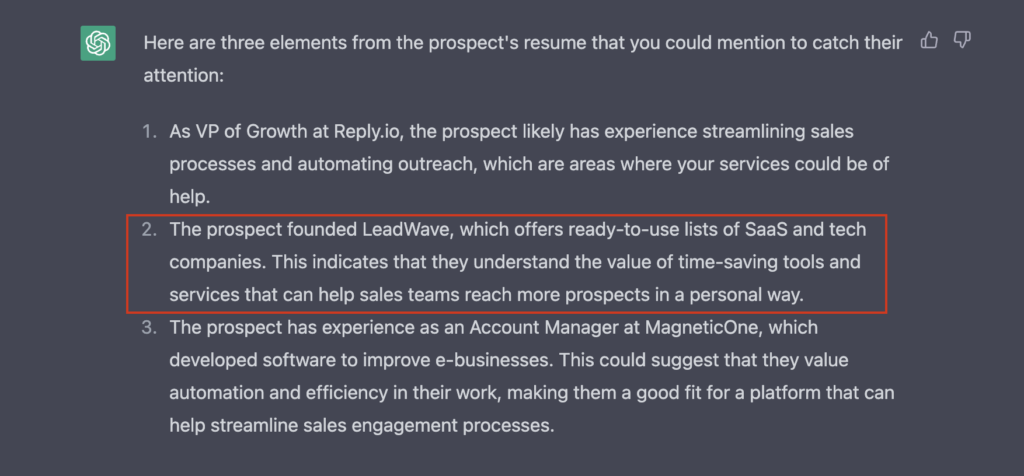Have you jumped on the ChatGPT bandwagon yet? Because I surely did!
An automation enthusiast, I appreciate every chance to boost my productivity (especially if it’s using some cool new tech that has already caused a great deal of controversy and alarm to some of the industry luminaries, including Elon Musk).
So I’ve been playing around with this next-level AI model for the past few months and I can say that there are things that I absolutely love. However, there are also certain limitations that you should be aware of.
In this post, I will share some of the ChatGPT use cases for sales and sales development professionals that you can implement, along with some prompts to help you get started.
Proceed with caution
Most AI experts agree that the right prompt is the key to the successful use of ChatGPT. After all, you get what you ask for. Accordingly, you can dramatically improve the outcomes from ChatGPT by improving your prompts.
For example, including relevant ICP details in the prompt or specifying preferred email formats you’ve used in the past and asking it to use that format but include the info you’ve provided would lead to a much better result than simply asking “write a cold email for me.”
It’s also useful to instruct ChatGPT to be more direct and remove a lot of the fluff it tends to include.
If you want to play safe, you can go with any of the ChatGPT-based tools like Writesonic or Copy.AI that have premade templates.
There are also some handy tools that provide curated prompt templates like this Chrome extension or exhaustive catalogs that make it super easy to get started with AI!
It’s also best to go with a tool that was built specifically for sales – like our own Jason AI. It combines our own AI algorithms trained on millions of emails and the power of ChatGPT to create unique emails from a prompt, generate tailored multichannel sequences for any business use case, and respond to incoming emails on your behalf!







